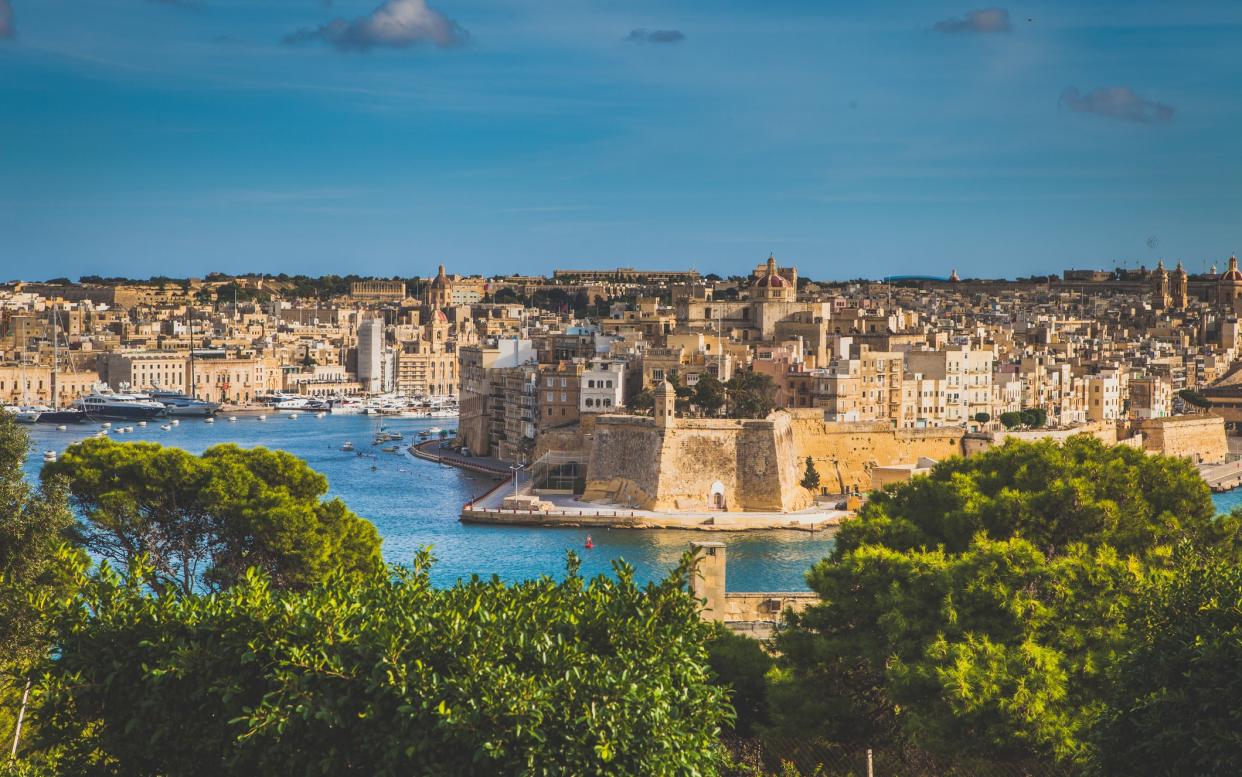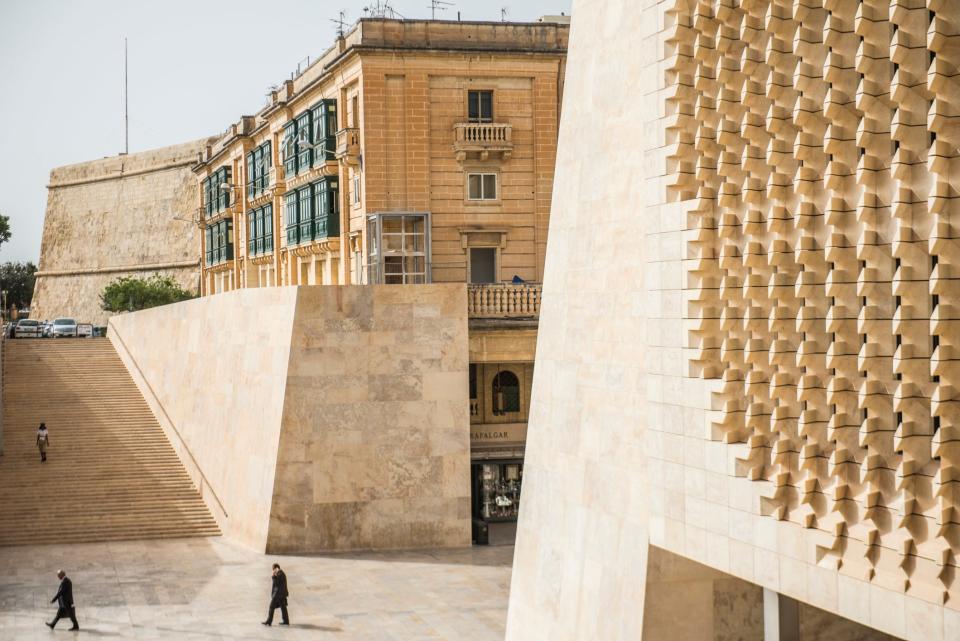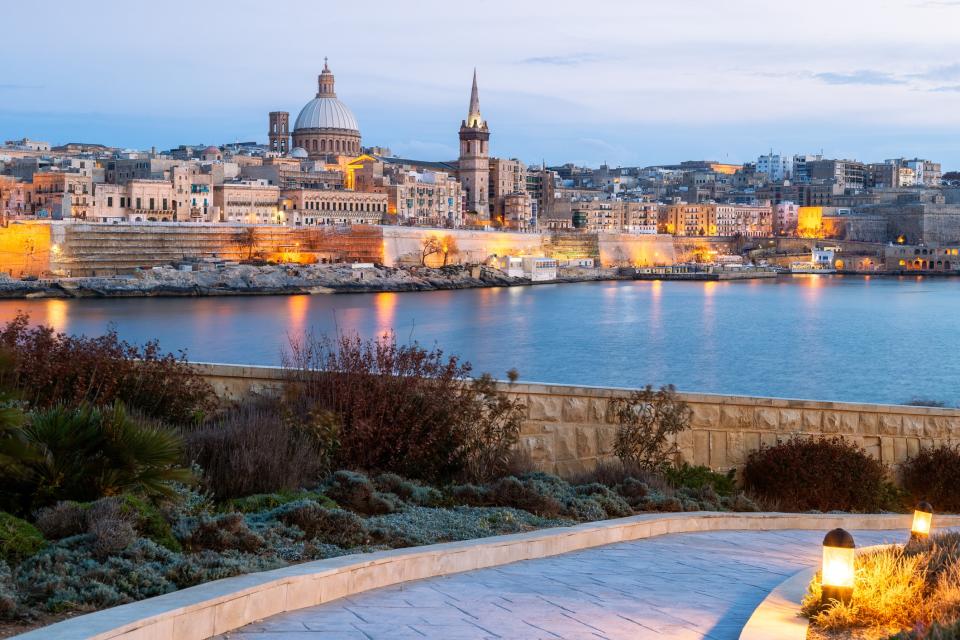Return to Malta: An empty island of baroque treasures awaits British travellers

Malta knows a thing or two about invasions. For more than 7,000 years, Phoenicians, Greeks, Romans, Arabs, French and Brits, 14 cultures in all, came, saw and bunkered.
It means Malta has no shortage of fortifications. Its land and seascape is filled with towers, turrets, dry moats and walls of sun-baked, yellowing blocks of globigerina limestone.
If fortifications could keep the plague out, Malta would be safe.
Instead it has been trying to keep Covid-19 at bay with less explosive weapons: flight bans and temperature checks.
It fared well, with a relatively meagre death toll of nine, and only 15 active cases as of this week. But, being heavily reliant on tourism, the door could not remain closed, and on July 1 foreign visitors (initially from selected European countries, with others – including Britons – to follow on July 15) were welcomed for the first time since March.
Among them was me, as I stepped off flight FR7242, the modern day equivalent of a Phoenician bireme, a knight of the new age of masked air travel.
An overhead camera read the temperatures of arriving passengers. Three medics in hospital scrubs called passengers out, either because they had a high temperature, at random, or, in one case, because their woolly hat had obscured the reading.
The arrivals hall was closed completely. What meet-and-greet there was took place was in the open air, still searing from a day of 38C heat.
In the Phoenicia hotel I was welcomed by name. There were only four guests.

“You are my first tourist in three months,” Clive Cortiz told me when we met outside the Auberge of the Spanish knights.
Clive has a track record as the best guide in Malta. He once spent a week showing Meghan Markle around.
He took delight in walking me around the walled city of Mdina, past its churches, cannonades and stately homes, with their pregnant windows of arched steel bars, where residents could first check for visitors of malevolent intent.
The classic viewpoints were eerily empty, for February, never mind July. Mdina was devoid of crowds and the churches echoed when the doors closed. You could pick your viewpoint on De Redin Bastion, a place inaccessible on those days when five cruise ships are in town.

“Everything about Malta is baroque,” Clive said. “Our architecture, our castles, our churches. Even in our faces. How we talk. How we decorate our houses.”
Even its lockdown was baroque. Malta took it very seriously, with fines for breaching quarantine and a population obediently awaiting the nightly advice of Charmaine Gauci, one of the many celebrity CMOs that have emerged across Europe during the Covid crisis. People went into mourning when she came off the air. Gozo was even cut off from Malta for three weeks.
Valletta, too, was recovering its homely vigour. Renzo Piano, designer of the Shard, reconceived its entrance gates in 2015, paying architectural homage to previous centuries.

Many of the families continue to live in ancestral homes. Clement Depiro’s family have been in theirs, Casa Rocca Piccola, since 1580. Now a nine-room B&B, it contains centuries of portraits, a sedan chair that belonged to a French Knight, papal gifts, including slippers from three popes, and an invitation to a Royal Coronation in London “by command of the queen.” Clement’s grandfather brought home a stool, which cost £10, as a souvenir – a bit pricey considering the Maltese regard Queen Elizabeth as one of the neighbours. A trained mechanic, Princess Elizabeth once stopped to help change a flat tyre that had stranded the grandmother of another of the island’s tour guides, Joanne Muscat.
I was among the first customers back with Chrystelle Doublesin on the GPS-guided “Rolling Geeks” buggy tour and we passed narrow streets and waving locals, glad to see a tourist back, on our way to Ta’ Betta Wine Estates in Girgenti, four hectares of terraced beauty, golden stone walls and green vine leaf.
Maltese wine was protected by high tariffs until the country joined the EU in 2004. The local wine industry, with its hand picking and tiny scale of production, faced wipeout when the tariffs were lifted. Their entry level table wine with red colouring no longer filled the shelves of the island. They had to move upmarket.
As with wine, so with food. You wait four decades for a Michelin star, and three come together. One was secured by veteran chef and advocate for Maltese produce, Victor Vorg, for his Under Grain. I stopped in one evening to help celebrate its reopening, the chatter of diners a welcome sound to my ears after lockdown.
“There were only two places to eat out on a Maltese family occasion,” Carina Dimech of the Malta Tourism Authority recalls from her childhood. Now Maltese food has arrived, and they have three Bib Gourmands as well.
On a typical day in July, about 100 boats would queue to enter the Blue Lagoon on Comino, the island between Malta and Gozo that has become a tourism standard, with the braver swimmers jumping off the higher rocks and the shoreside stall doing a nice trade in ice cream and coffee.
My boatman, Kevin Vella, stopped to point out a wreck in the clear blue water and explained how visibility has improved. Over on Gozo, it is a similar story, and turtles are nesting at Ramla Bay for the first time in years.

Like the turtles, not everyone was happy about reopening. The danger when you lower the drawbridge is an imported case. It happened three days after I travelled. It came from Amsterdam, a returned Maltese national, prompting some to question the lifting of restrictions. Malta knows, more than most, that repelling determined invaders is a long game.
My time in Malta was full of rediscovery and a rebirth, but a few knights short of the full phalanx. Tourism here has some way to go before it restores the Maltese order. But the sun shone brightly and the globigerina threw the light back. Another invasion repelled.
For more information about Malta at www.maltauk.com
Air Malta has flights from London Heathrow from £44 or Manchester from £36; www.airmalta.com
Eoghan stayed at The Phoenicia Malta and rooms start at £167 per room per night including breakfast; www.phoeniciamalta.com

Can I visit Malta?
Malta opened its borders fully to UK travellers on July 15. There are temperature checks on arrival.
Which airlines are offering flights?
In addition to Air Malta, Ryanair is due to restart services from Birmingham (July 16), Bristol (July 16), Liverpool (July 17), Luton (July 18), Stansted (July 18) and Manchester (July 20). EasyJet will soon restart flights from Manchester (July 16) and Gatwick (July 18).
Must I wear a face mask?
Face coverings are required in airports and during flights. Passengers on public transport must wear face masks. Museums and tourist sites, shops, gyms, hairdressers, swimming pools, restaurants and bars have re-opened but with restrictions on the number of customers allowed entry, a requirement to wear a mask, and an ability to maintain social distancing.


